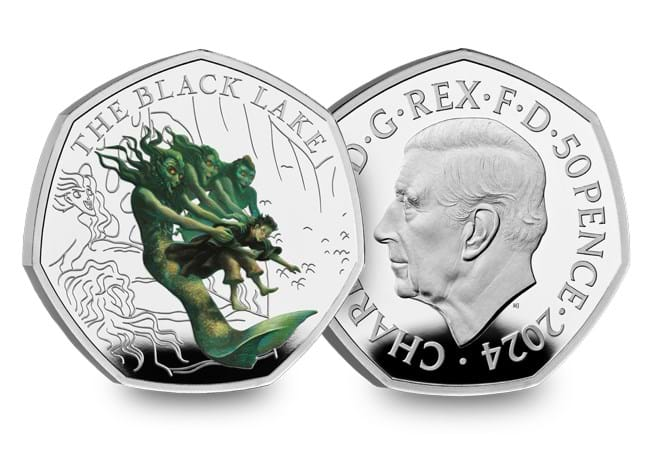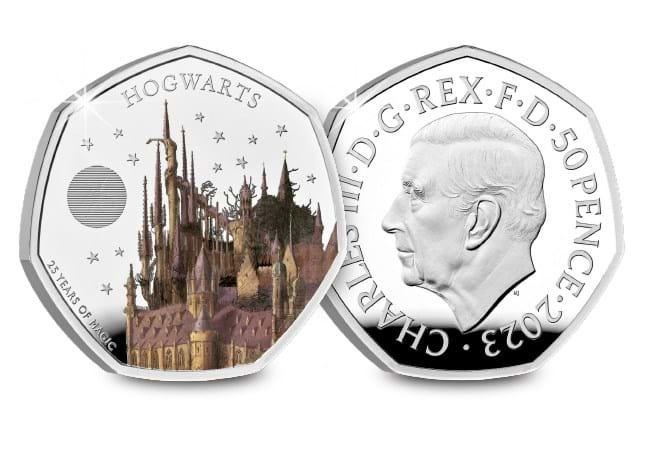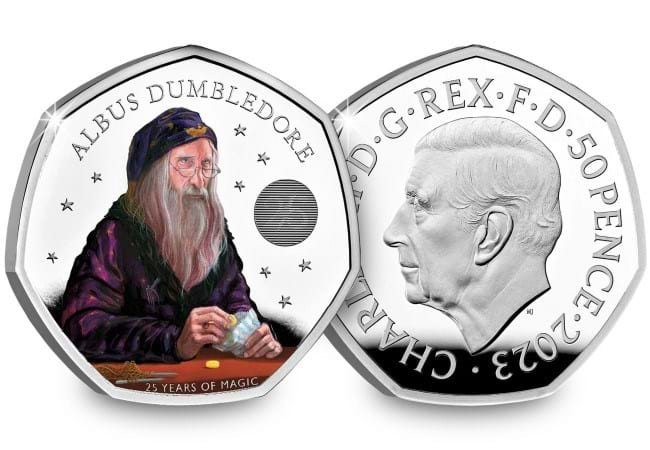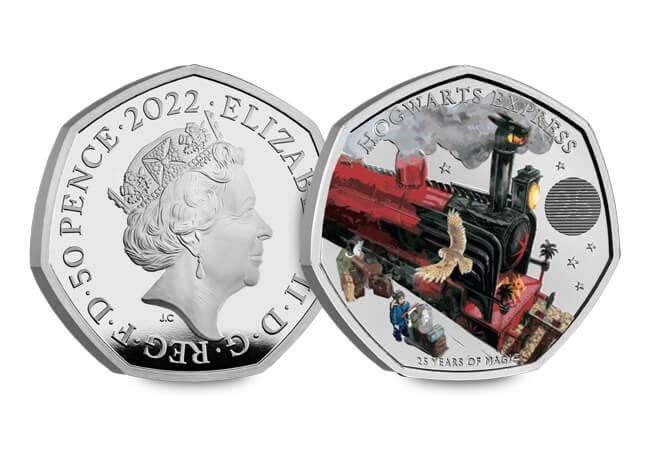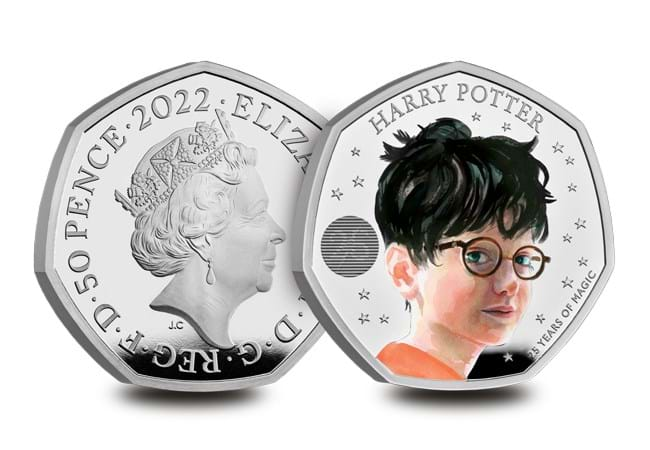Uncategorised
The World of Harry Potter UK 50p Coin Series ⚡
The Royal Mint has released a spellbinding collection of UK 50p coins capturing some of the most cherished aspects in the World of Harry Potter. This collection spans across two exciting series, celebrating Harry’s journey, friendships, and pivotal moments in a way only the artistry of coin design could achieve.
LATEST RELEASE – UK Harry Potter & the Flying Car 50p
The Royal Mint have just released a brand-new UK Silver Proof 50p coin celebrating the iconic moment in the ‘Chamber of Secrets’ where Harry and Ron get stuck on platform 9 ¾ until the trusty Weasley flying car comes to the rescue.
Soaring high above Hogwarts, the strictly limited Silver Proof edition of this coin is finished with spectacular colour to bring the car to life…
Previous Harry Potter 50p coins…
Click ‘MORE INFO’ on each coin above to find out more about each individual release.
Series 2 (Most Recent)
Series 2 of The World of Harry Potter 50p series explores themes of courage, loyalty, and adventure, spotlighting unforgettable moments from Harry’s journey. Crafted by Bella Biggs at The Royal Mint, each coin captures the spirit of teamwork and bravery at the heart of Harry’s story.
The Black Lake
The second in Series 2 takes us to the intense world of the Triwizard Tournament from Harry Potter and the Goblet of Fire. The coin’s design portrays Harry underwater during the Black Lake challenge, where he must summon all his courage to rescue his friends. Available in both Proof and Brilliant Uncirculated editions, this intricately detailed coin beautifully illustrates Harry’s bravery in one of his most daunting challenges. The silver Proof editions add a special layer of colour, making it a standout piece for fans and collectors alike. Importantly, the gold proof edition is now fully reserved at the Mint, so the opportunities to secure the Black Lake 50p for your collection are becoming increasingly limited.
The Winged Key Challenge
The very first coin in Series 2 pays tribute to the friendships that shape Harry’s journey. Featuring the iconic Winged Key challenge, the coin depicts Harry on a broomstick, reaching for the elusive key that will allow him, Ron, and Hermione to protect the Philosopher’s Stone. Bella Biggs’ stylised design brings this moment of teamwork to life, celebrating Harry’s unbreakable bond with his friends. This coin is available in a range of editions, including gold and silver Proof, and also features select editions with vibrant colour printing.
Series 1
Series 1 commemorates the roots of Harry’s story, with each coin based on the original illustrations by Jim Kay, whose work on the illustrated editions of Harry Potter has brought new depth and detail to these cherished tales.
(Special Note) Each coin in this series includes a special 25th anniversary lenticular feature.
Hogwarts School of Witchcraft and Wizardry
The fourth and final coin in Series 1 transports us to the heart of the wizarding world—Hogwarts itself. The beautiful portrayal of the school is steeped in detail, capturing its iconic turrets and towers, beloved by fans. This coin marks the second in the series to feature King Charles III’s effigy. Struck in a range of specifications and all coming in special Royal Mint packaging, complete with bespoke artwork celebrating the magic of Hogwarts.
Professor Dumbledore
The third coin in Series 1 honours Albus Dumbledore, Hogwarts’ revered headmaster, symbolising wisdom and courage. This was the first Harry Potter 50p coin to feature King Charles III’s effigy, establishing the dual-portrait theme. The coin includes a special lenticular feature—a unique addition for UK 50ps—a fan favourite was the addition of colour, showcasing Dumbledore with Jim Kay’s artwork in incredible detail. With only 15,000 silver Proof coins available, this release is as exclusive as it is magical.
Hogwarts Express
This coin celebrates the Hogwarts Express, the train that whisks young wizards from Platform 9¾ to Hogwarts. The edge of the Silver Proof edition is inscribed with ‘PLATFORM NINE AND THREE-QUARTERS,’ echoing the first step Harry takes into the wizarding world. This enchanting design is available across a variety of specifications, including the Proof, gold Proof, and Brilliant Uncirculated editions.
Harry Potter
The series begins, as it should, with the boy who started it all. This first coin in Series 1 features Harry Potter himself, drawn from Jim Kay’s iconic artwork that brought Harry to life for a new generation. With the edge inscription ‘HARRY POTTER – THE BOY WHO LIVED!’ on the Silver Proof edition, it’s a powerful homage to the story’s central figure and the journey that has captivated readers for 25 years.
A Magical Collection
Each coin is available in multiple specifications, from the Brilliant Uncirculated to the limited edition silver and gold Proof versions, with select coins also offered in colour. The Harry Potter 50p series offers collectors a chance to commemorate the magic of the Harry Potter series through an exquisite collection of coins that honour the characters, places, and moments that have shaped generations.
Whether you’re a lifelong fan or a collector of remarkable coinage, The World of Harry Potter 50p series brings a touch of enchantment to any collection. So why not embark on a new adventure and celebrate the boy wizard’s world in a way that can be treasured for generations to come?
The Dassier coins worth THOUSANDS – Your Replica for JUST £4.99
Imagine holding a meticulously crafted medal inspired by the legendary work of Swiss medallist Jean Dassier, celebrating one of England’s most iconic monarchs, Henry VIII. This carefully recreated piece brings a touch of history right into your collection.
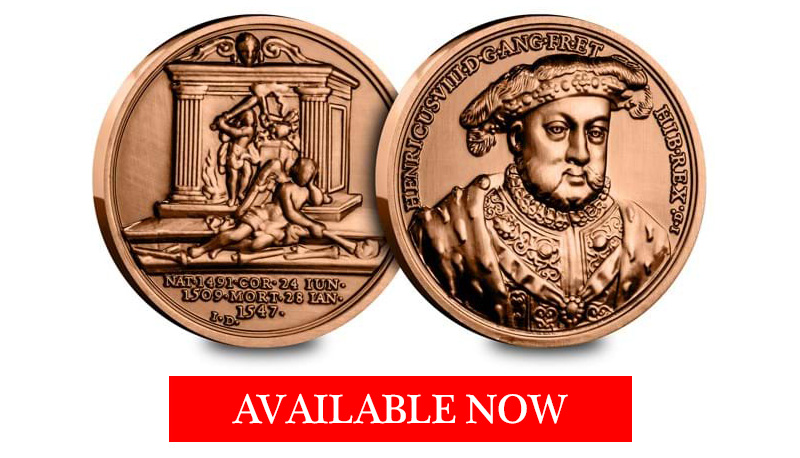
Who was Jean Dassier?

Jean Dassier was a master engraver and artist from Geneva, known for his intricate and highly respected medal collections. His career reached new heights in 1731 when he was commissioned to create the “Kings and Queens of England” series.
This original 34-piece series, approved by Queen Caroline, brought the history of British royalty to life in stunning damascened bronze. Each medal portrayed a British Monarch on the obverse and their final resting place on the reverse, showcasing Dassier’s commitment to detail and artistic precision. Dassier’s original works, now almost 300 years old, are coveted pieces that sell for thousands of pounds at The Royal Mint.

Now, you can pay tribute to Dassier’s genius with an exacting recreation of the Henry VIII medal, available to you for only £4.99 (+p&p) when you trial the Dassier Replica Collection.
This piece captures the intricacies of Dassier’s original design, offering a chance to connect with history and celebrate the legacy of one of England’s most famous rulers. Crafted to mirror Dassier’s vision, this medal is as much a piece of art as it is a collectible, allowing you to experience the grandeur of the “Kings and Queens of England” series.
This is a unique opportunity to own a piece of historical artistry inspired by the originals Dassier poured his skill into nearly three centuries ago. Each medal in this series preserves the royal legacy Dassier set out to capture, making it a must-have for history enthusiasts, collectors, and admirers of fine craftsmanship alike.
Secure your Jean Dassier Henry VIII Medal today for the introductory offer price of JUST £4.99 (+p&p). and start your collection with this timeless tribute.
But, with just 9,995 available worldwide, time is of the essence…
Click here to claim yours before it’s too late >>
How You Can Own Australia’s FIRST EVER King Charles III Coinage

The Royal Australian Mint have unveiled their official effigy of His Majesty King Charles III, over 2 years since the Queens’s passing, this has been highly anticipated as one of the final Commonwealth Nations to change their effigy.


As the very first set to feature the Australian effigy of King Charles III, there has been great demand from collectors wanting to secure their own piece of numismatic history.
Each set has made the 10,000-mile journey from Canberra to here in the UK, so we only have a limited number available – even as an official distributor for The Royal Australian Mint.


Available in either the Brilliant Uncirculated or Proof quality, you can choose how you wish to mark this historic occasion. Both specifications are free of any marks or blemishes and feature all six denominations, from the 5-cent piece to the 2-dollar coin.
Protectively housed in a specially designed display case to preserve your Australian coinage for generations to come.




